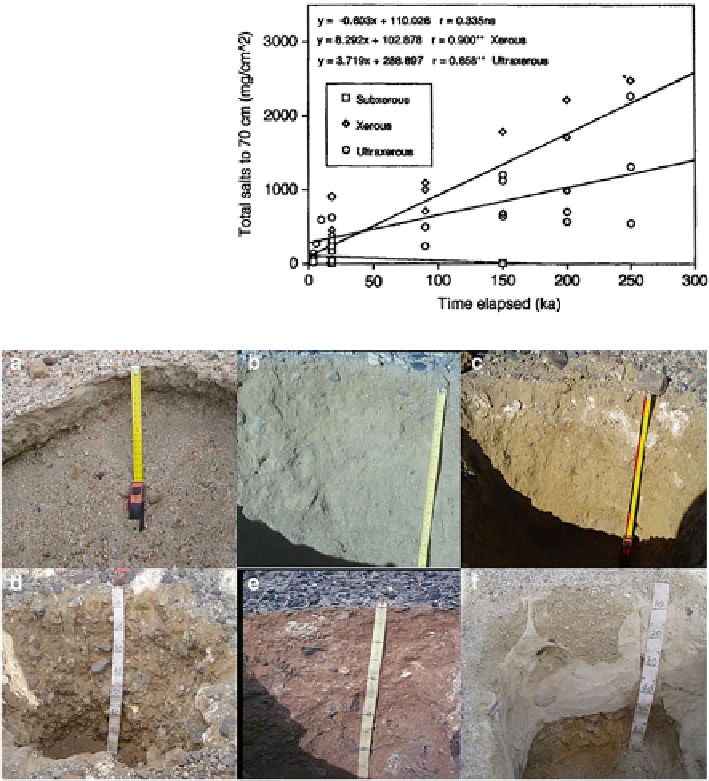Geoscience Reference
In-Depth Information
Fig. 11.3
Profi le content of
soluble salts in relation to
time for three climatic zones
in the central Transantarctic
Mountains (Bockheim and
Wilson
1993
)
Fig. 11.4
Representative soils in Wright Valley, including (
a
) a soil on a Late Glacial Maximum
surface, (
b
) a soil on mid to late Quaternary (H1) aged hummocky drift, (
c
) a soil on early
Quaternary (Wright) drift, (
d
) a soil on the Pliocene-aged Valkyrie drift, (
e
) a soil on the Pliocene
or older Alpine IV drift, and (
f
) a groundsoil and buried soil on the 3.9 My Hart Ash (Bockheim
and McLeod
2006
)
Hart Ash (F). The fi gures clearly show an increase in profi le development of cohesion,
salts, and depth of oxidation in relation to time.
Changes in the degree of development of the desert pavement are readily
observable in a soil chronosequence derived from sandstone and dolerite drifts
from the Taylor Glacier in Arena Valley (Fig.
11.5
). The dominant size range of
clasts decreases with time of exposure, ranging from 16 to 64 mm on Holocene
and late Quaternary surfaces (A) to 8-16 mm on surfaces of middle Quaternary

